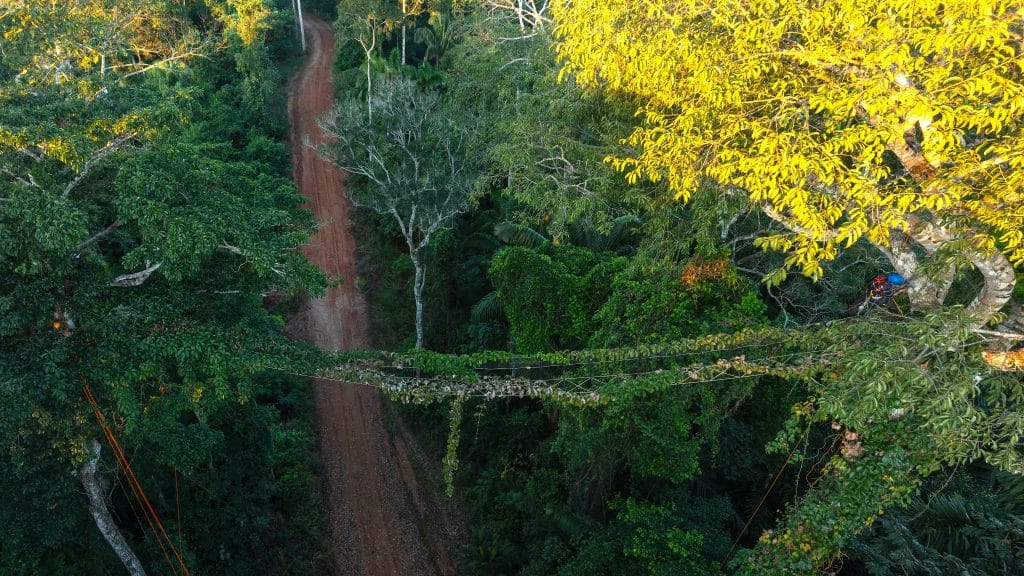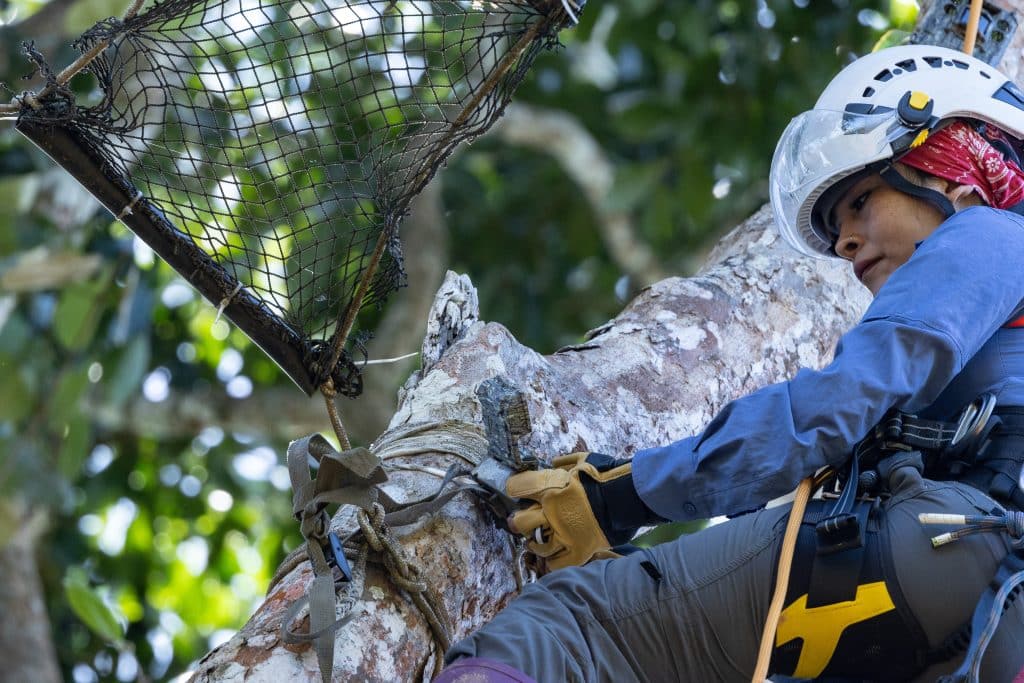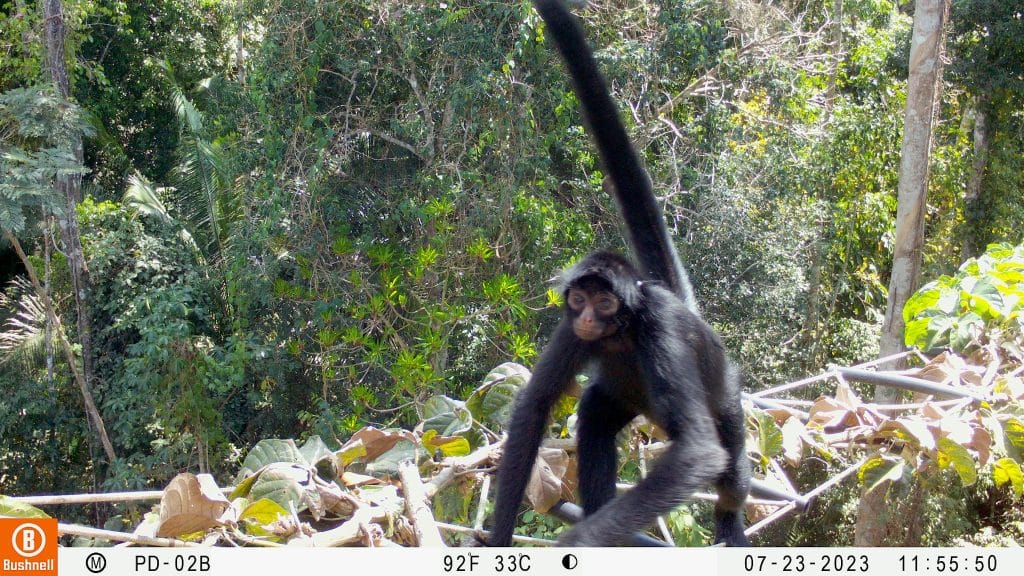Sunlight glinted off the camera’s lens as Vania Tejeda secured it to the tree trunk. She pointed the camera toward the nearby netted bridge, a 100-foot horizontal rope ladder connecting two large trees on opposite sides of a road 130 feet below. In Peru’s Madre de Dios region, one of the Amazon basin’s most biodiverse areas, extractive industries and agricultural land conversion have created roads carving wide scars through this dense rainforest. This fragmentation makes it difficult for arboreal wildlife, which rarely touch the ground, to traverse their canopy ecosystem. With support from WCN’s new Rising Wildlife Leaders Amazonia Program, Vania is constructing engineering feats high in the treetops to preserve connectivity for the under-looked wildlife overhead.
WCN’s Amazonia Program is a joint initiative with the Gordon and Betty Moore Foundation and the Global Environment Facility’s Fonseca Leadership Program. It strengthens leadership skills and fosters networking between rising wildlife leaders in the Amazon basin to fuel their long-term careers. Vania’s incredible ambition earned her a place in the program’s inaugural cohort this year. Since 2021, she and her colleagues have built and installed artificial canopy bridges over forest roads to restore connectivity for black spider monkeys, red howler monkeys, kinkajous, sloths, opossums, and many more animals.
Vania’s project is the first of its kind in Peru, helping arboreal wildlife adapt to a divided habitat and deepening scientific understanding of canopy ecology. So far, her team has designed and built 20 canopy bridges that allow rainforest tree-dwellers to find food and genetically diverse mates. Vania’s project uses cameras to monitor over 25 species using the bridges, collecting valuable data to advocate for environmental policies that will influence national road planning in logging concession areas.
Through the Amazonia Program, Vania is learning crucial project management and planning skills to expand her work’s impact. She and her colleagues are already brainstorming new bridge designs to cater to unique animal behavior, such as how spider monkeys often cross the bridges on their hind legs, using their arms and long tails for balance. Ultimately, Vania sees her project for what it literally is—a bridge, not just to connect habitat, but to reach a higher level in her conservation career.





